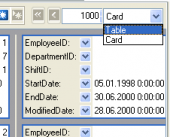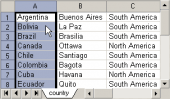MS SQL Maestro online Help
| Prev | Return to chapter overview | Next |
CLR Trigger Editor
CLR Trigger Editor allows you to edit CLR Trigger definition (CLR trigger name, CLR trigger comment, etc.). It opens when you create a new CLR trigger or edit the existing one (see How to edit CLR trigger for details).
The basic principles of Object Editors in MS SQL Maestro are explained in a separate topic. Below you will find a description of editor tabs that are unique for the current object.
Specify CLR trigger options according to your needs. The detailed description is given below.
Name
You can edit the CLR trigger name here.
Note: the name of the object must be unique among all the object names in its container. Moreover, all the objects that are source of data need unique names among themselves. You can use any identifier that is allowed by Microsoft SQL server.
Comment
You can supply a comment for the CLR trigger.
Create Date
Displays the date when the CLR trigger was created.
Modify Date
Displays the date when the CLR trigger was last modified.
Execute As
Specifies the security context under which the CLR trigger is to be executed.
Type
Defines the type of the CLR trigger. Possible values are After (specifies that the trigger is only fired after all operations specified in the triggering SQL statement have executed successfully) and Instead of (specifies that the trigger is executed instead of the triggering SQL statement, therefore, overriding the actions of the triggering statements).
Events
Specifies the data modification statements that activate the trigger when it is tried against this table or view. At least one option must be specified. Any combination of these options in any order is allowed in the trigger definition.
 Enabled
Enabled
If checked, it is denoted that a trigger action takes effect when fired.
 Not For Replication
Not For Replication
When checked, it is indicated that the trigger should not be executed when a replication agent modifies the table that is involved in the trigger.
Assembly, Class, Method
Specifies the method of a .NET Framework assembly for a CLR stored function to reference. Class must be a valid SQL Server identifier and must exist as a class in the Assembly. The assembly is to be created in the database beforehand.
See also: Assemblies
To apply the changes, select the Apply Changes item in the Navigation bar or use Ctrl+F9 or Ctrl+F7 shortcut keys.
It is also possible to modify object properties without opening the object editor: use the Object Properties item of the popup menu of the selected object from the explorer tree.
| Prev | Return to chapter overview | Next |





 Download
Download Buy
Buy
